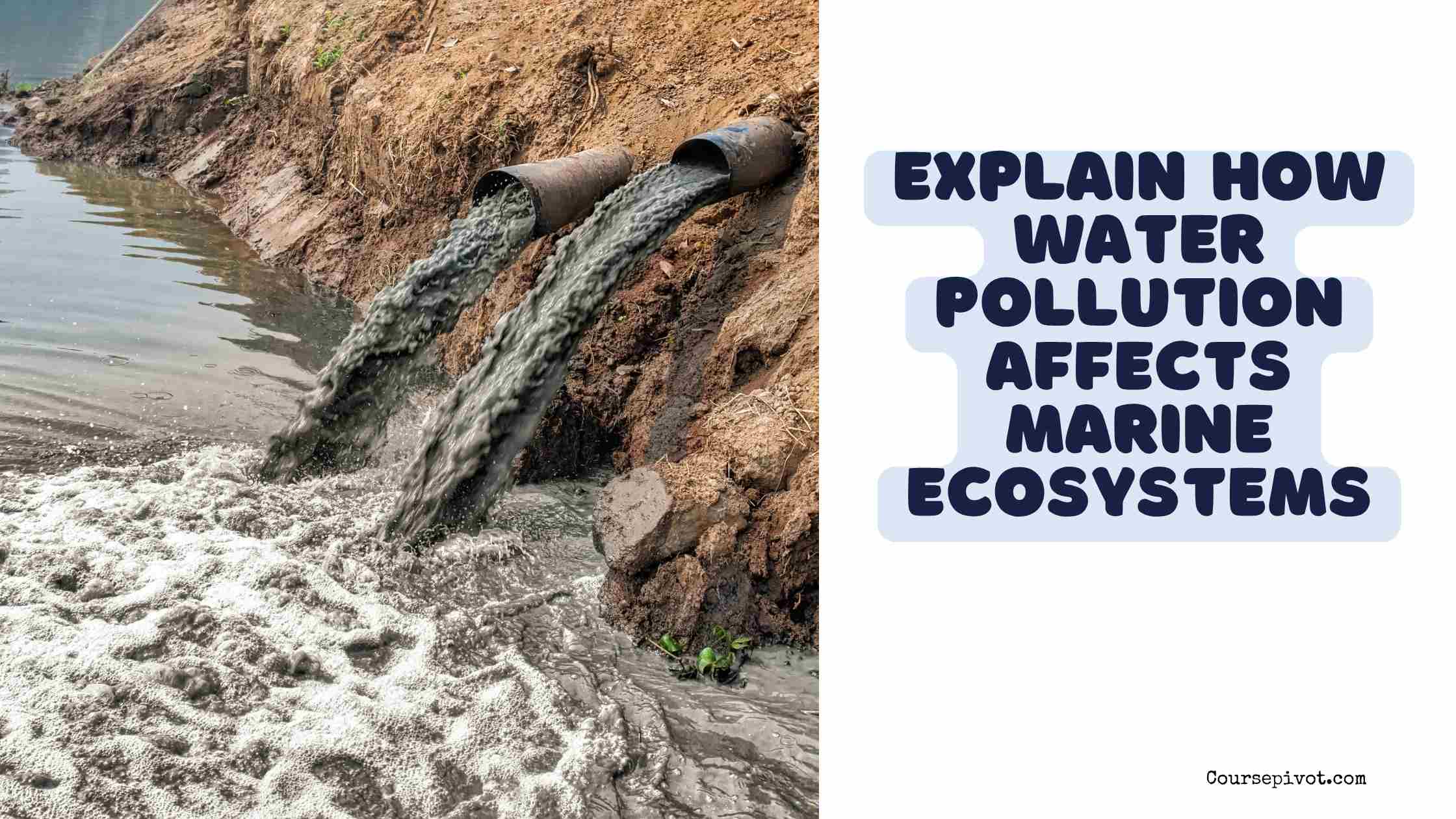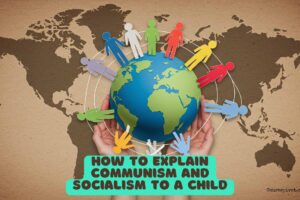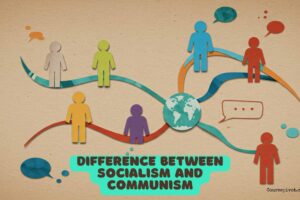
How Water Pollution Impacts Marine Ecosystems
Have you ever seen a beach littered with plastic or heard about fish kills in polluted waters and wondered what’s happening beneath the surface? I’ve always been troubled by images of marine life tangled in debris, prompting me to dig deeper into how our actions harm the oceans. The question Explain how water pollution affects marine ecosystems addresses a critical environmental issue threatening the health of our seas. In this blog, I’ll explain how water pollution impacts marine ecosystems, focusing on its effects on biodiversity, food chains, habitat degradation, and ecosystem services.
Table of Contents
Water pollution, from chemicals, plastics, and nutrients, disrupts marine ecosystems, which cover 70% of Earth’s surface and support 50% of global biodiversity, per WWF data. This matters because oceans provide food, oxygen, and climate regulation for billions, yet 80% of marine pollution comes from human activities, per UNEP. I’ve been struck by how a single oil spill can devastate entire coastal communities. Let’s dive into the ripple effects of pollution on marine life.
Why should you care? Because marine ecosystems sustain your food, air, and climate, and pollution threatens them all. This article will define water pollution, detail its impacts, provide examples, and reflect on its significance. Ready to explore how pollution harms our oceans? Let’s get started.
What Is Water Pollution in Marine Ecosystems?
Water pollution in marine ecosystems refers to the introduction of harmful substances—chemicals, plastics, nutrients, or pathogens—into oceans, seas, or coastal waters, degrading water quality and harming marine life. Common pollutants include:
- Chemicals: Oil, pesticides, heavy metals (e.g., mercury).
- Plastics: Microplastics, bags, or fishing nets.
- Nutrients: Nitrogen and phosphorus from fertilizers.
- Sewage: Untreated human or industrial waste.
Pollution enters via runoff, spills, or dumping, with 10 million tons of plastic and 4 billion tons of wastewater entering oceans yearly, per UN data. I find it shocking how our waste ends up choking the seas.
How Water Pollution Affects Marine Ecosystems
Water pollution affects marine ecosystems by reducing biodiversity, disrupting food chains, degrading habitats, and diminishing ecosystem services, creating cascading effects that threaten marine life and human well-being. Here’s how each impact unfolds:
Reducing Biodiversity
Pollution kills or harms marine species, shrinking biodiversity:
- Toxic Effects: Heavy metals like mercury poison fish, with 90% of large predators like tuna showing elevated levels, per NOAA, reducing populations by 20–30%.
- Plastic Ingestion: Marine animals, like turtles, eat plastics, mistaking them for food, causing 1 million deaths yearly, per IUCN. 60% of seabirds have plastic in their stomachs.
- Oxygen Depletion: Nutrient pollution causes algal blooms, depleting oxygen and creating dead zones—7,000 square miles in the Gulf of Mexico, per EPA, killing 50% of local species.
In the Pacific, plastic pollution has reduced albatross populations by 15%, per research. I’m heartbroken by how our trash suffocates marine life.
Disrupting Food Chains
Pollution alters predator-prey dynamics, destabilizing food webs:
- Bioaccumulation: Toxins like DDT build up in plankton, concentrating in fish and predators, with top predators like orcas showing 100 ppm DDT, per studies, impairing reproduction.
- Plankton Decline: Acidic or polluted waters harm plankton, the food chain’s base, reducing stocks by 10–15%, per Nature, impacting fish that feed 1 billion people, per FAO.
- Trophic Cascades: Fewer prey species, like krill, starve predators like whales, with 20% population drops in some regions, per marine biology data.
In the Baltic Sea, chemical pollution cut herring stocks by 30%, starving seals, per local studies. I see how a single pollutant can unravel entire food webs.
Degrading Habitats
Pollution destroys critical marine habitats, disrupting ecosystems:
- Coral Bleaching: Nutrient runoff and oil spills stress corals, with 50% of global reefs lost since 1950, per UNESCO, affecting 25% of marine species.
- Seagrass Loss: Sewage and sediment smother seagrasses, vital nurseries, with 30% global loss, per UNEP, reducing fish breeding grounds.
- Mangrove Damage: Plastic and chemical pollution degrade mangroves, coastal buffers, with 35% lost, per IUCN, increasing flood risks.
Australia’s Great Barrier Reef has lost 20% of corals to pollution-driven bleaching, per GBRMPA. I’m alarmed by how habitat loss leaves marine life homeless.
Diminishing Ecosystem Services
Pollution weakens oceans’ ability to provide essential benefits:
- Oxygen Production: Plankton, producing 50% of global oxygen, decline due to pollution, with 10% less output in polluted zones, per NOAA.
- Fisheries Decline: Polluted waters cut fish yields by 20%, costing $100 billion yearly, per FAO, threatening food for 3 billion people.
- Climate Regulation: Damaged ecosystems absorb less CO2, with oceans taking 30% less carbon in polluted areas, per IPCC, worsening warming.
- Coastal Protection: Degraded mangroves increase storm damage, costing $500 billion yearly, per UN.
Chesapeake Bay’s oyster collapse from nutrient pollution cost $4 billion in ecosystem services, per EPA. I’m concerned by how pollution undermines the oceans’ gifts.
Read our blog on Why Biomes Are Not Typically Classified by Temperature
Real-World Example
In the Gulf of Mexico, nutrient pollution from agricultural runoff fuels algal blooms, creating a 7,000-square-mile dead zone each summer, per EPA data. Nitrogen from fertilizers, carried by the Mississippi River, depletes oxygen, killing 50% of bottom-dwelling species like shrimp, reducing fish catches by 20%, and costing $1 billion annually. Coral and seagrass habitats suffer, disrupting food chains and coastal protection. This shows how pollution triggers widespread ecological damage.
I’m stunned by how farm runoff, so far inland, devastates Gulf marine life.
Why These Impacts Matter
Water pollution’s effects on marine ecosystems are critical because:
- Biodiversity Crisis: Oceans host 50% of species, with 20% at risk from pollution, per IUCN.
- Food Security: 3 billion people rely on seafood, with 30% of stocks overfished or polluted, per FAO.
- Climate Stability: Oceans absorb 30% of CO2, but pollution cuts this by 10%, per IPCC, accelerating warming.
- Economic Losses: Marine degradation costs $2 trillion yearly, per UN, hitting fishing and tourism.
I see pollution as a threat to the oceans’ life-support systems, urgent for us all.
Mitigating Water Pollution
Solutions to reduce impacts include:
- Reduce Runoff: Use sustainable farming to cut nutrient pollution by 30%, per EPA, adopted by 20 countries.
- Clean Up Plastics: Remove 10 million tons of ocean plastic by 2030, per UN SDG 14, with 50 nations pledging action.
- Regulate Emissions: Enforce chemical discharge laws, reducing 40% of industrial pollution, per UNEP.
- Restore Habitats: Replant mangroves and corals, boosting 20% of fish stocks, per IUCN.
I support these efforts, knowing they revive oceans and livelihoods.
Challenges in Addressing Pollution
Action faces hurdles:
- Global Scale: Pollution crosses borders, with 80% from land sources, requiring 200 nations’ cooperation, per UN.
- Economic Costs: Cleanup and regulation cost $1 trillion yearly, per World Bank, straining poorer countries.
- Industry Resistance: Agribusiness and plastics firms, worth $2 trillion, lobby against rules, per OpenSecrets.
- Time Lag: Ecosystems take decades to recover, with 50% of reefs locked into decline, per NOAA.
I’m frustrated by these barriers but hopeful that global will can prevail.
Protecting Our Oceans: Key Takeaways
The question Explain how water pollution affects marine ecosystems reveals that pollution from chemicals, plastics, and nutrients reduces biodiversity (1 million animal deaths yearly), disrupts food chains (20% fish stock loss), degrades habitats (50% coral loss), and diminishes services like oxygen production and fisheries ($2 trillion cost). The Gulf of Mexico’s dead zone exemplifies these impacts. I’m inspired by cleanup efforts but sobered by the scale of the crisis.
Read our blog on How Renewable and Recyclable Materials Benefit the Environment
Why should you care? Because marine ecosystems sustain your food, air, and climate. What’s stopping you from acting? Reduce plastic use, support clean-water policies, and advocate for ocean health today.
Summarized Answer
Water pollution affects marine ecosystems by reducing biodiversity (e.g., 1 million animal deaths from plastics), disrupting food chains (20% fish stock loss), degrading habitats (50% coral loss), and diminishing services like oxygen and fisheries, costing $2 trillion yearly.
Cite this article
You can copy and paste your preferred citation format below.
Martin, L. & Arquette, E.. (2025, June 6). How Water Pollution Impacts Marine Ecosystems. Coursepivot.com. https://coursepivot.com/blog/explain-how-water-pollution-affects-marine-ecosystems/



